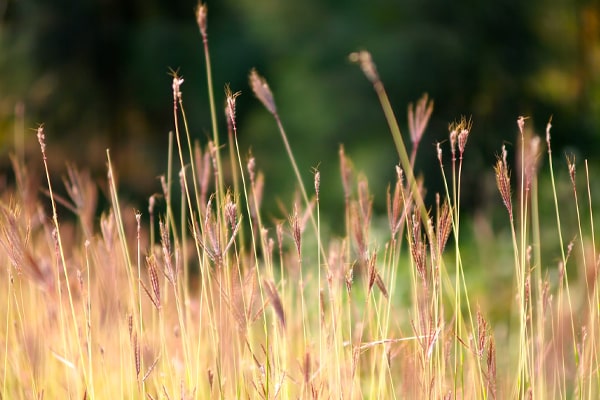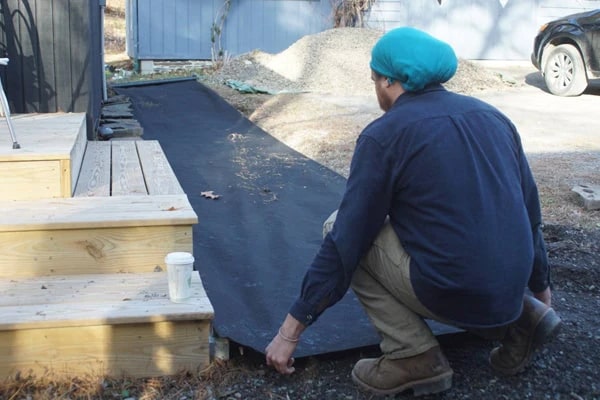Weeds are generally bad news to growers, but some variants can be a real headache for growing specific crops. In this guide, we’re listing down different weed variants and how they affect certain crops. We’ll also lay out solutions to keep them off your garden or field.
Weed Control for Specific Plants

Morning glory: A variety of twisting vine with pretty flowers, morning glory can cause big trouble for certain plants like soybeans, cotton, and corn. It wraps itself around these plants, blocking out sunlight and stealing their nutrients. This makes it hard for the crops to grow properly, leading to smaller harvests.
Growers have to work extra hard to get rid of it, pulling it out by hand or using special chemicals called herbicides. If they don’t keep it under control, morning glory can spread quickly, taking over fields and making it even harder to grow healthy crops.
But remember, we should stay away from using herbicides. There are natural ways to control weeds without using chemicals.
Johnson grass: This fast-growing weed spreads easily, taking up space and stealing nutrients from the crops. Leaving this weed unchecked can affect crops like corn, sorghum, and soybeans. Johnson grass can stunt their growth and reduce the amount of food they produce.
It’s important to catch Johnsongrass early before it spreads too much.
One way to keep this weed from taking over the garden is to plow the fields before planting. This will break up the Johnson grassroots and stop them from growing back. Hand pulling the weeds can also keep them from taking over the garden. Always keep an eye out for new sprouts then pull right away.
Some farmers also use herbicides that target Johnson grass specifically, killing it without harming the crops.
Quackgrass: A type of weed that obstructs the growth of crops like oats, barley, corn, clover, wheat, and alfalfa. Early detection is also important; it prevents Quackgrass from spreading.
Try not to till the soil once Quackgrass has sprouted because any disturbance could spread rhizomes or seeds all over. Instead, do repeated and regular deep plowing.
Using landscape fabric or black plastic is also an effective way to eliminate Quackgrass completely. Smothering quackgrass with a 2-3 inch layer of mulch made from wood chips can also prevent it from spreading in the fields or garden.
Solarizing the soil with clear plastic will also work to remove quackgrass from sprouting in the garden beds. The clear plastic traps heat, killing the weed.
Palmer amaranth: A stubborn, fast-growing weed that affects crops like corn, cotton, soybean, and peanut. Apart from being a fast grower, Palmer amaranth is resistant to some weed killers. It can spread quickly and take over the garden within weeks, stealing space and nutrients from the crops. This can lead to smaller harvests and less food for us.
One way to prevent Palmer amaranth from growing and spreading in your garden is to check for seeds and equipment for any Palmer amaranth seeds before planting.
Other ways to prevent this weed from thriving in the garden are to grow cover crops to suppress its growth, grow crops in narrow rows so Palmer amaranth doesn’t have enough room to grow, and handpull every weed you see in the garden.
Canada thistle: A stubborn weed that can affect the growth and development of certain crops, including canola, alfalfa, barley, and wheat. Like other weed variants in this list, Canada thistle is a fast grower, able to take over fields within weeks and steal resources from crops.
As it grows, it crowds out the plants, leading to stunted growth, reducing the quality of rangelands, and lower yields.
Mow the fields regularly to cut down the Canada thistle before it has a chance to spread its seeds. Tilling the soil also helps break down grassroots.
But since repeated tilling may affect the quality of the soil, you can also try installing weed barrier landscape fabric to block the sunlight. This prevents the weed from going to seed.
Kochia: Just like Palmer amaranth, kochia has developed resistance to herbicides, making it harder to control.
This weed competes fiercely with crops for space, sunlight, and nutrients, hindering the growth and reducing yields of crops like wheat, corn, and soybean, sorghum, sugar beet and sunflower. In fact, kochia can cause 90% yield loss if left unchecked!
Crop rotation is a great strategy for keeping kochia under control. It works by disrupting the kochia’s life cycle, reducing its prevalence in fields over time.
Additionally, tillage practices such as deep plowing can bury kochia seeds, preventing them from germinating.
Always keep an eye out for kochia and remove it by hand to avoid the seeds from spreading. One good thing about kochia, the seeds are short-lived. By preventing seed production early on, you’ll deal with fewer weeds next year.
Nutsedge: Also known as nutgrass, nutsedge is particularly problematic for crops like vegetables (e.g., tomatoes, peppers) rice, cotton, corn, tobacco, mulberries, lemons, as it competes for nutrients and water and can reduce yields.
Crop rotation is a great strategy for getting rid of nutsedge because it breaks the weed’s life cycle. It also reduces its presence over time.
Installing landscape fabric is also an effective way to prevent nutsedge from growing without using chemicals. Landscape fabric blocks sunlight, killing sprouting weeds and preventing seeds from germinating. You can also use plastic covers or mulch to smother nutsedge and prevent it from taking over the garden.
Regular field checks are also important; walk through the fields frequently, and pull out any nutsedge they find before it can spread.
Chemical-Free Weed Control Strategies, Explained

Most growers use herbicides to target weeds without harming crops. This is an effective solution to persistent weeds but it’s not eco-friendly. Thankfully, there are chemical-free methods to reduce weeds in gardens and agricultural fields.
Solarization: Solarization involves covering the soil with clear plastic to trap heat from the sun. This process raises soil temperatures to levels that kill weed seeds, seedlings, and some types of perennial weeds. It’s particularly effective in warm climates and during the hottest months of the year. To solarize, prepare the soil by removing debris and watering it thoroughly. Then, lay a clear plastic tarp over the area and seal the edges with soil to trap the heat. Leave the plastic in place for 4-6 weeks to effectively kill weeds.
Landscape Fabric: Landscape fabric, also known as weed barrier or weed control fabric, is a porous material that blocks sunlight from reaching the soil surface, preventing weed seeds from germinating. It allows water and air to penetrate while suppressing weed growth. To use landscape fabric, lay it over the soil surface in the desired area and secure it with stakes or pins. Cut holes in the fabric to plant desired plants. Over time, landscape fabric can degrade, so it may need to be replaced periodically.
Black Plastic: Similar to solarization, black plastic can be used to heat the soil and kill weeds through a process called soil sterilization. Unlike clear plastic, black plastic blocks sunlight, creating a dark, warm environment that is inhospitable to weeds. To use black plastic, lay it over the soil surface and secure it in place. Leave it in place for several weeks to several months, depending on the weather and the types of weeds present.
Mulch: Mulching is the process of covering the soil surface with a layer of organic or inorganic material, such as wood chips, straw, or shredded leaves. Mulch helps suppress weed growth by blocking sunlight, smothering weed seedlings, and preventing weed seeds from reaching the soil. Organic mulches also improve soil structure and moisture retention. To mulch, spread a layer of mulch material evenly over the soil surface, taking care not to cover plant stems or trunks.
Weeds can indeed be troublesome for specific plants or crops, competing for resources such as water, sunlight, and nutrients. With these tips, it’s possible to control weeds and keep them from taking over your garden.



